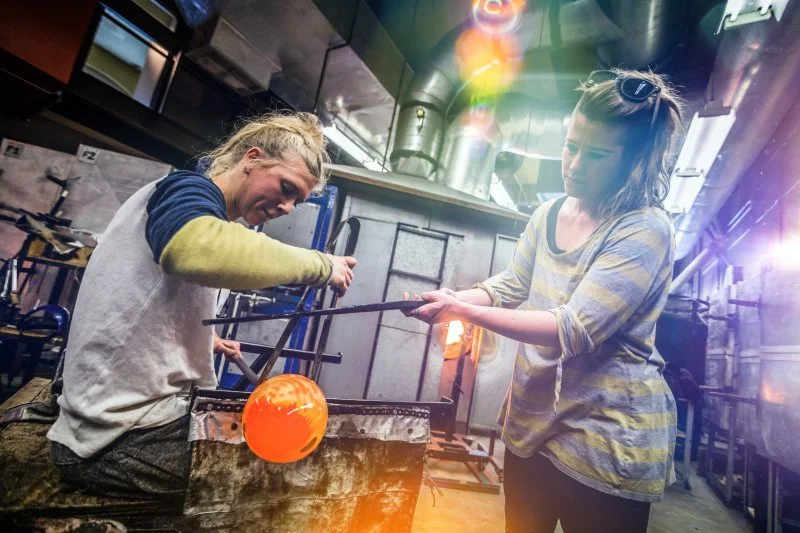The Art of Glass Blowing
“When you blow glass, you put yourself inside it. Quite literally, your breath becomes the vessel.” — Harvey Littleton
Fire, Breath, and Fragile Beauty
There’s a hush that falls when you watch molten glass turn to form. The furnace breathes, the blowpipe spins, and from the glowing honey of sand and fire emerges something impossibly delicate. Glass blowing is both elemental and ethereal—a dialogue between heat and hand, chance and control.
From Sand and Flame to Story
Glass itself is ancient, first coaxed from volcanic sands more than 4,000 years ago. But the art of glass blowing—the act of inflating molten glass with human breath—was born in Syria around the 1st century BCE. It was revolutionary. For the first time, artisans could shape vessels that were lighter, finer, more versatile than carved stone or molded clay.
Venice later became the cradle of glass refinement, its island of Murano guarding secret formulas and techniques. Crystal-clear goblets, colored beads, mirrors that seemed almost magical—these were not just objects, but status symbols, traded across empires.
The Dance of Craft and Fire
Step inside a studio today and the essence remains unchanged. The furnace still roars at 2,000 degrees. The blowpipe still gathers molten glass at its tip, glowing orange as the sun. The glassblower turns, breathes, and shapes with tools as simple as wooden blocks or as precise as steel shears.
Every movement matters. Too much heat, and the form slumps. Too little, and the piece cracks. It’s a constant dance between rigidity and fluidity, where the artist reads the glass as though it were alive.
Key Innovations That Shaped the Craft
The Blowpipe: A hollow iron tube, invented in antiquity, transformed glassmaking from static molds to dynamic art.
Colored Glass: Adding minerals—cobalt for blue, gold for ruby, manganese for purple—opened a palette of endless expression.
Studio Glass Movement: In the 1960s, artists like Harvey Littleton brought glass out of factories and into independent studios, sparking a wave of personal, expressive work.



